Many, many "iron guys." One day at the Army Museum in Paris
("My Paris" Ilya Ehrenburg, 1931)
Armor and museums. So, you are a man, and all men in your heart are at least a little killer, and now you need to get acquainted with his beauties. And since you read Dumas from childhood, you are aware that there is the New Bridge, the Louvre, and the Luxembourg Palace - the former residence of Maria Medici (“Decide that this is a hint at the Queen Mother ...” Athos grinned), and a lot what else. It’s clear that you can’t help but visit the Eiffel Tower, you can’t help but at least enter the Louvre (standing in line among the crowds of Chinese on a hot summer day is not a test for the faint of heart!), You can’t help but look at the Notre Dame fenced (“Look how burned out! ”). But what’s next, and then so - you need to go to the Museum of the Army, which is located in the House of Disabled, which was established by Louis XIV himself to live on the ready veterans of their wars.
Here they are - “knights”. Typical, so to speak, in our view, the soldiers of the Middle Ages, “chained to metal”, from a textbook for the 6-th class. But alas, this is not so in reality. Before us are the armor of the Latniks (although there may be quite knights in their social status!) Of the 16th century, and the one that builds on the right is completely of the 17th, because it has a bourguignon helmet.
Getting there is easy. In Paris there is a metro, and this museum is on all tourist maps. Some advise you to buy a single tourist ticket and ride it on the subway all day. Yes, you can. But ... experience shows that for some reason these tickets are often demagnetized. And ... you have to explain at the box office what you bought, but for some reason this "thing" does not work. So it’s better to be like everyone else.
You approach the building, and ... the bronze, greenish guns from time to time look at you on either side of the entrance. Go inside. There is a huge yard. Since my topic is knights, that is, “iron guys”, then ... and the story will be about them. The entrance to their exposition is at the end of the courtyard on the right. And there ... there are huge long halls, of a very magnificent appearance, in the center of which are glass windows of a very old pattern ("Mother, mother, mother ...") in which there are armor and horsemen. The horses under them are not the same as in our Hermitage, that is, they are not covered with “skin” but simply painted, but there are no bald spots on them either.
But we start with a small room where armor and weapon Bronze Age and Early Iron Age. And here, although there are not many exhibits in the hall, we will have something to see.
Moreover, note that not all daggers in the place where the blade goes into the handle, the convex cones of rivets are visible. Why are they, because the blade is cast at the same time with the handle? And this is evidence of inertia, the terrible inertia of human thinking. At first, only the blade itself was metallic, and the handle was wooden. And the blade was inserted into the slot of the handle and fastened with rivets with convex heads. But ... when there was a lot of metal and the handles began to be cast along with the blade, the rivets remained. And for millennia, the design of bronze swords and daggers has not changed!
And here's another thing that I always really like and that it’s time to make an obligatory element of the exposition of EVERY MUSEUM, including museums in our country: there is a remake of such an ancient Greek helmet. That is, you can see how this something, green from time to time, looked new. And, you must admit, immediately you start to relate differently to all these finds. Well, of course, it would be ideal if there was immediately the address of the company, which can make a copy of any of the exhibits displayed here for you for the appropriate fee.
The problem here and in all other museums everywhere is that if we go further and further from the present into the past, then we will have a problem with exhibits. After all, why, for example, in museums is there so much bronze? Because people were buried with her! And in the Middle Ages, there was Christianity and people were buried in the shrouds. Therefore, the iron products of the Early Middle Ages are very few.
Unfortunately, the design of the museum is old. That is, old, albeit beautiful, shop windows, disgusting, old, backlighting and ... traditionally executed signatures, where, however, there is a text not only in French, but also in English, and in German, but ... but - the description of the exhibit itself is done in French.
And if you don’t know French and stories chivalry, then brief inscriptions in English will say little to the visitor. This is a big drawback of this museum. Very big! The Vienna arsenal is not so arranged, where the bulk of the armor is exposed openly and the lighting is beautiful. True, there are also equestrian figures of knights here, but ... for some reason, they are extremely unsuccessful. That is, you can’t get to them.
1500 year. A kind of beginning of the "transition period" (next!) In the history of armor. Pointed shoes disappear and bear-paw style shoes appear. There is a massive distribution of plate mittens in the form of just mittens (“mittens”), and not gloves. Finally, the famous “Maximilian armor” appears with characteristic grooves over their entire surface and ... smooth greaves below the knees! There, the grooves, apparently, were no longer required. The first “costume armor” appears, but they deserve a separate story ...
Of course, in the Army Museum there are a lot of armor for tournaments and, again, precisely those that appeared after the 1500 of the year. And it’s clear why! Their cost just went through the roof. Therefore, they were very cherished and ... that’s how they are preserved to our time. You can compare them with those that are exhibited in the Vienna arsenal and it will become obvious that if before all the armor was strictly individual, now they began to make them almost in-line method. And why? Yes, because no one really looked at the armor themselves for the same gestech or rennen! We looked at the helmet decorations, lush ostrich feathers, horse blankets and ... pleated skirts of the riders themselves. Behind all this magnificence, metal was practically invisible. But in those tournament armor that was used so to speak in a “bare form”, one can see in the design both etching, and engraving, and blackening, and gilding - all kinds of finishes, if only ... “it was beautiful”!
As you know, over time, the so-called "Italian Rennen", that is, rennen with a barrier, gained great popularity. The spears for this fight were light, made of poplar wood. Therefore, they easily broke. It was during such a contest 30 June 1559 year, and the king of France Henry II was injured. He had already defeated his three opponents, but wished to fight also with Gabriel de Montgomery, the lord de Lorges. And here, after the collision, a fragment of Montgomery’s spear fell into the viewing slit of the king’s helmet and went deep into his right eyebrow. Of course, it was removed, but the infection began, from which Henry died on the 10 of July of the same year. However, German tournaments were even more dangerous. For example, the same "free tournament" in which the "tarch with bars" was used. Then the sharp tip could no longer slip off of it, as a result of which the rider from the correctly directed blow certainly flew out of the saddle.
To prevent the loser from injuring his kidneys in the fall, the saddle for this type of tournament did not have back bows. Nothing, therefore, banged him off his horse. But what was it like for him to fall to the ground (even if on sand!) In armor weighing up to 50 kg?
Around 1515, the legs in tournaments completely stopped protecting, using dlje shields attached to the saddle to cover them. But ... the weight of the armor itself did not decrease. Liliana and Fred Funkens, for example, write that the weight of such armor began to reach 70 and even 80 kg. But the weight of the spear could be equal to 12-15 kg!
As for the genesis of combat armor, corrugated armor in Italy was abandoned around 1520 of the year, and around 1540 in Germany. But about 1530 of the year, plate gloves with movable fingers come into fashion again, so that it would be more convenient to shoot with a pistol. Around the 1550 of the year, the front of the cuirass takes on a characteristic wedge-shaped shape, and instead of the old “skirt”, split leggings appear. That is, it is very easy to distinguish late armor from early armor. There is a “skirt” of hoops that make it look like a kind of tourist folding cup - armor of the 15th century. There are knee pads with a neckline for "manhood" - which means already the XVI century. and not just the 16th, but after the 1550 year!
Around this time, or even somewhat earlier, armor coated with black or blue paint comes into fashion.
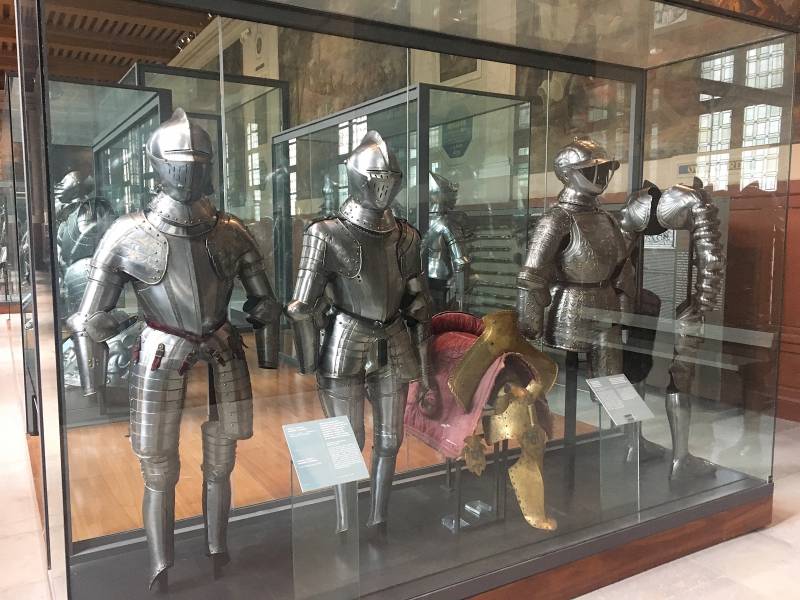

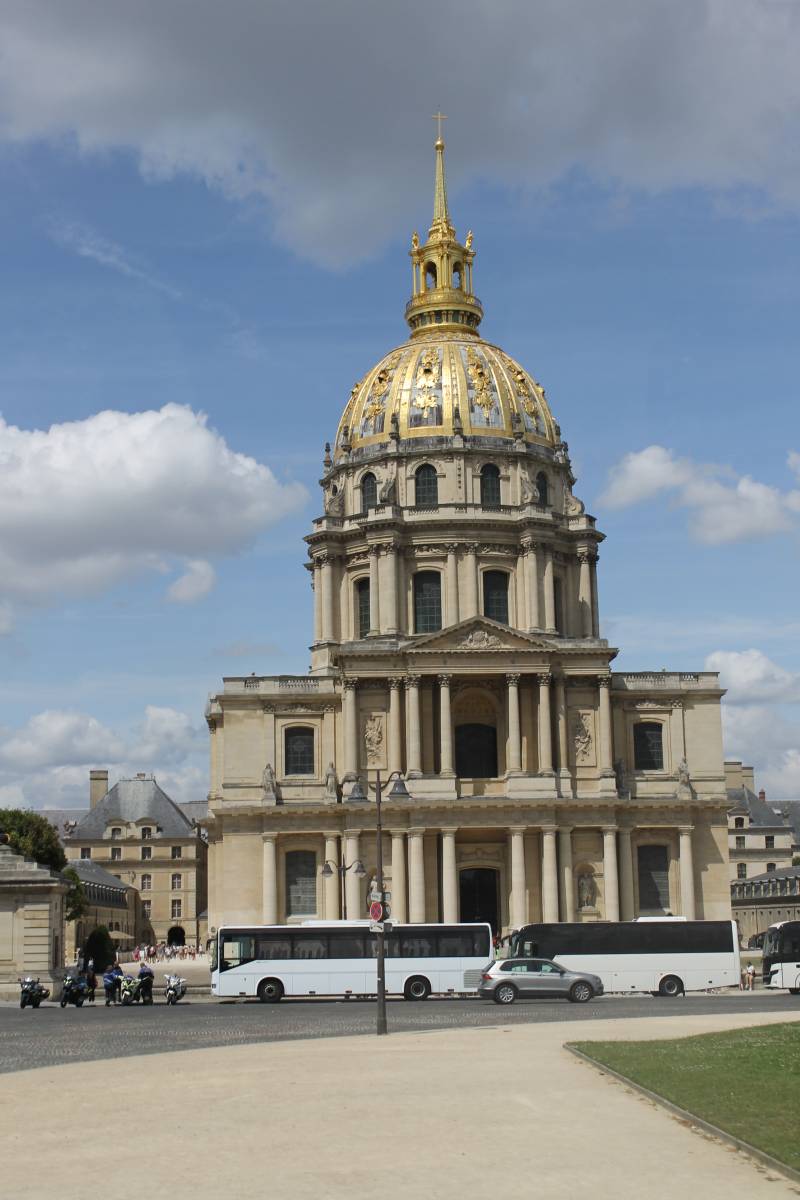
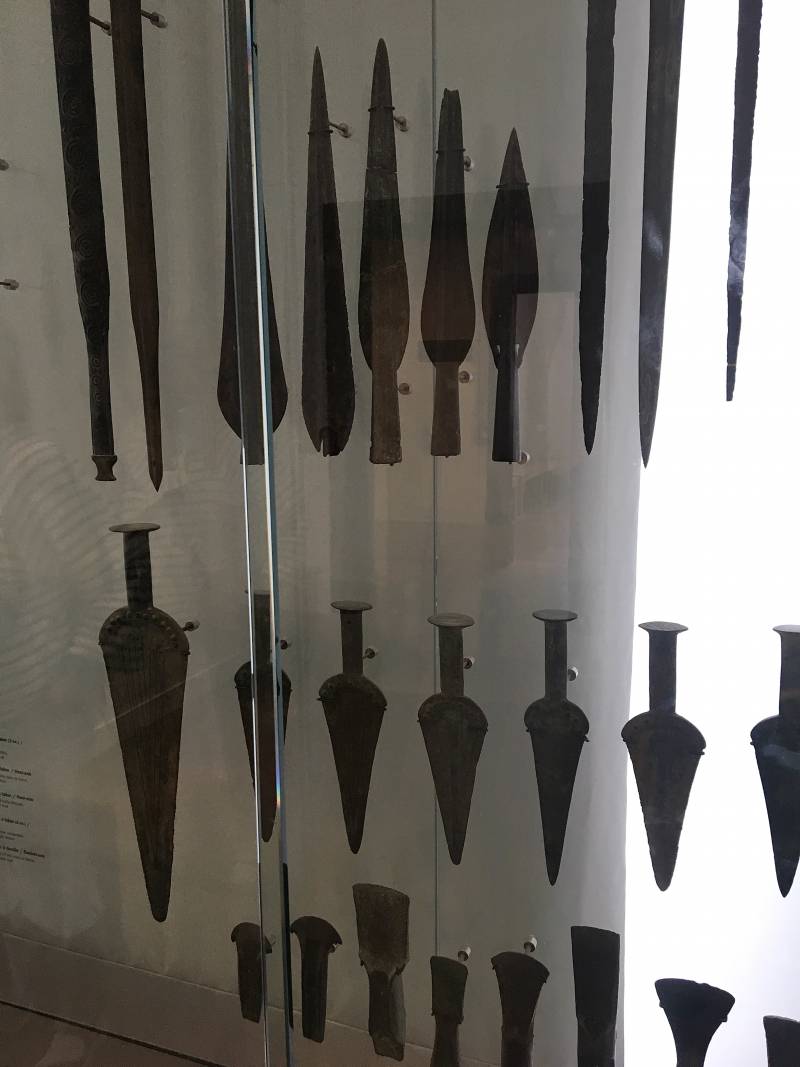
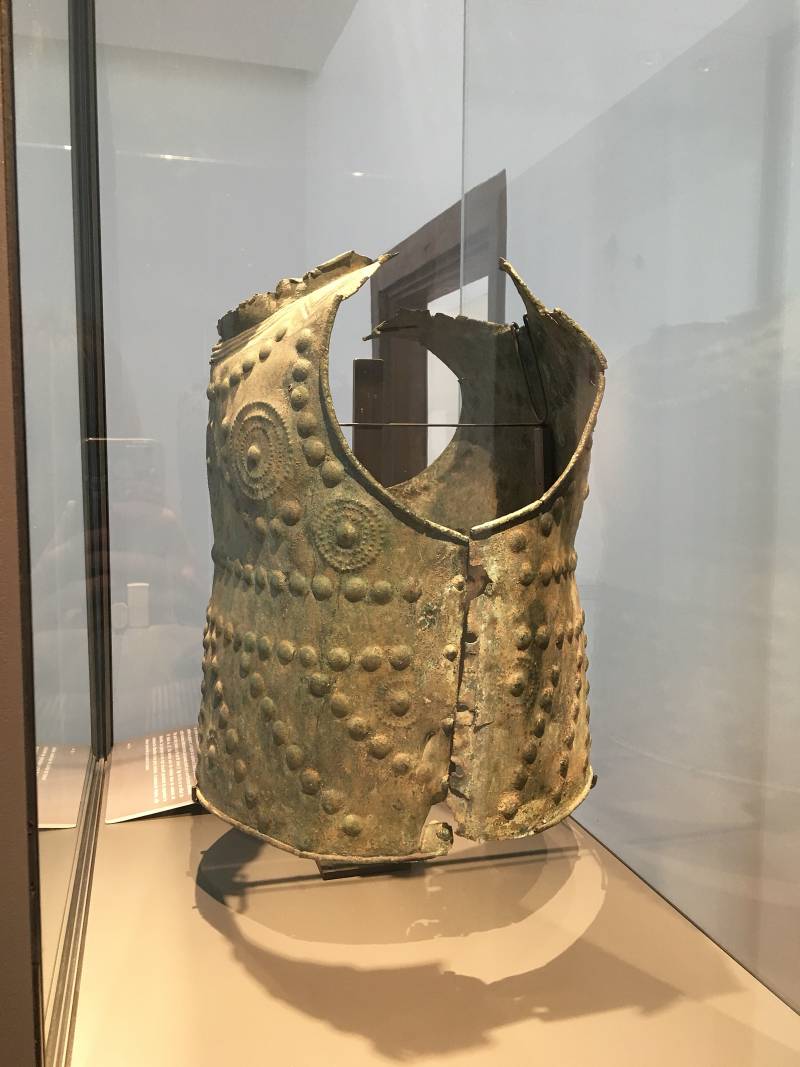
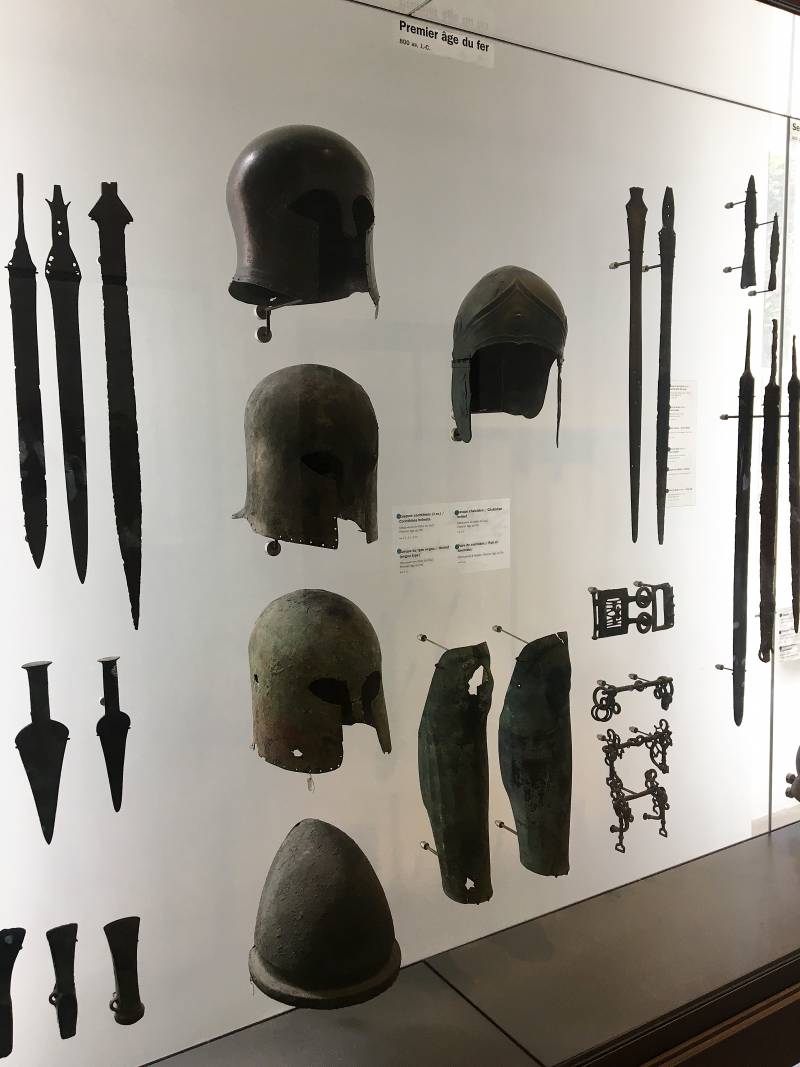
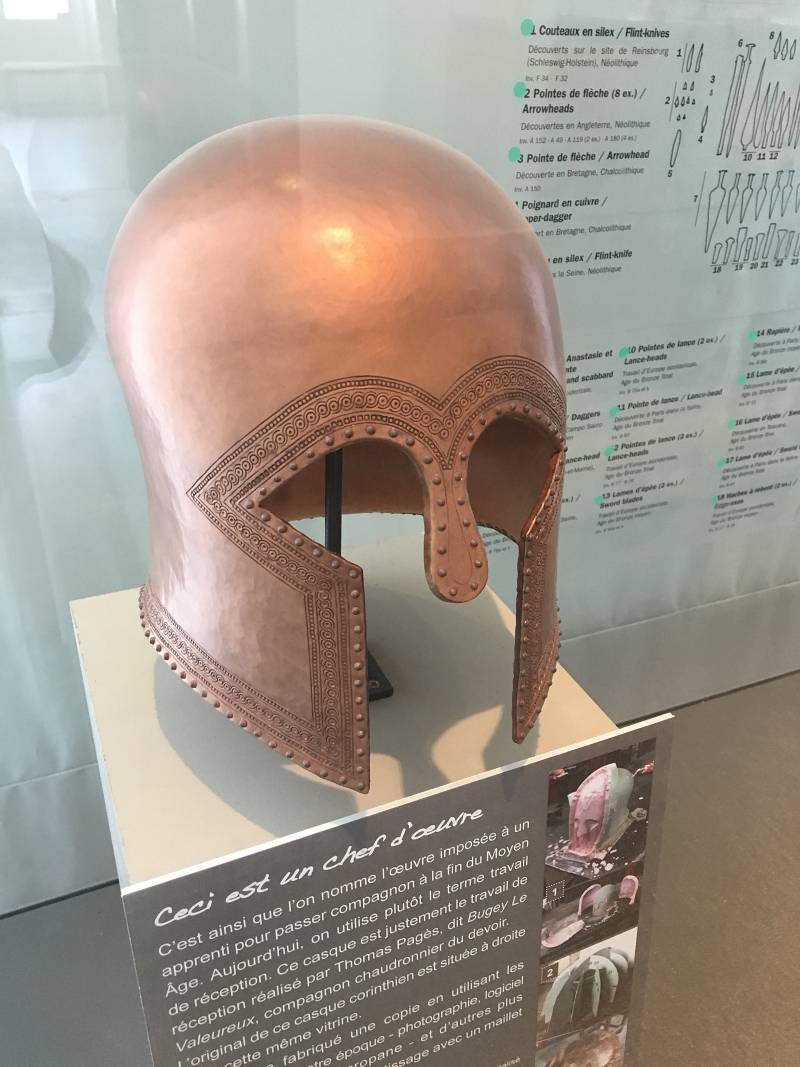
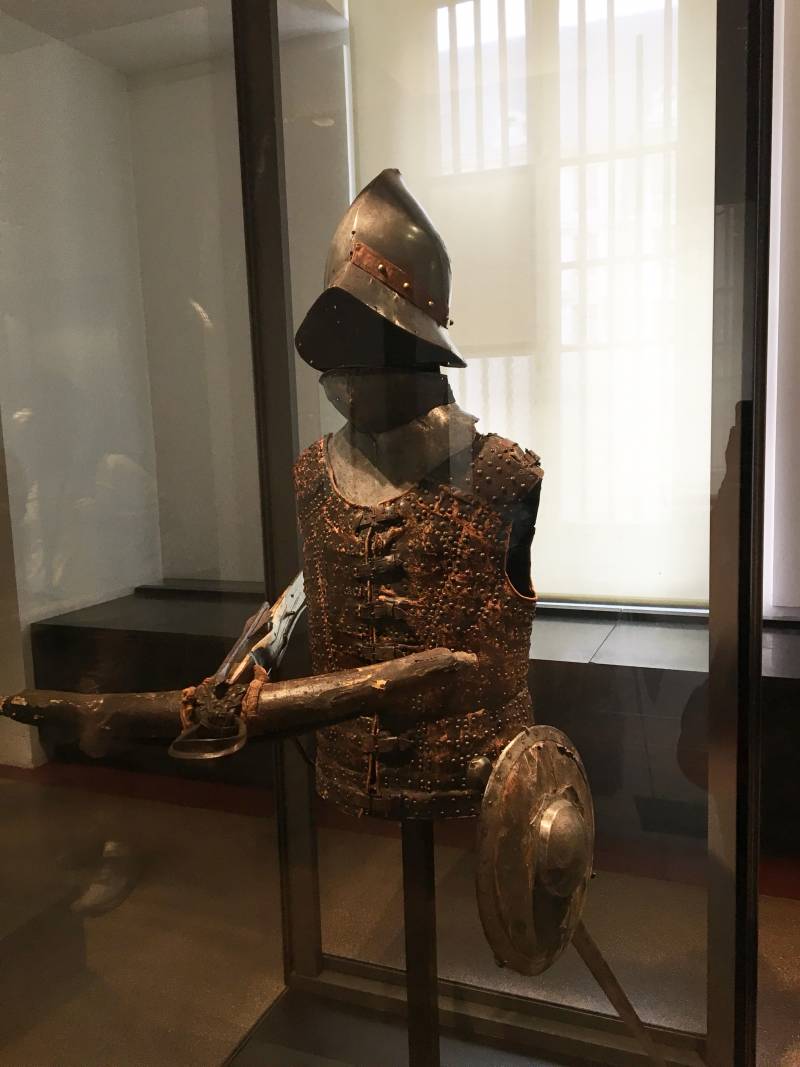
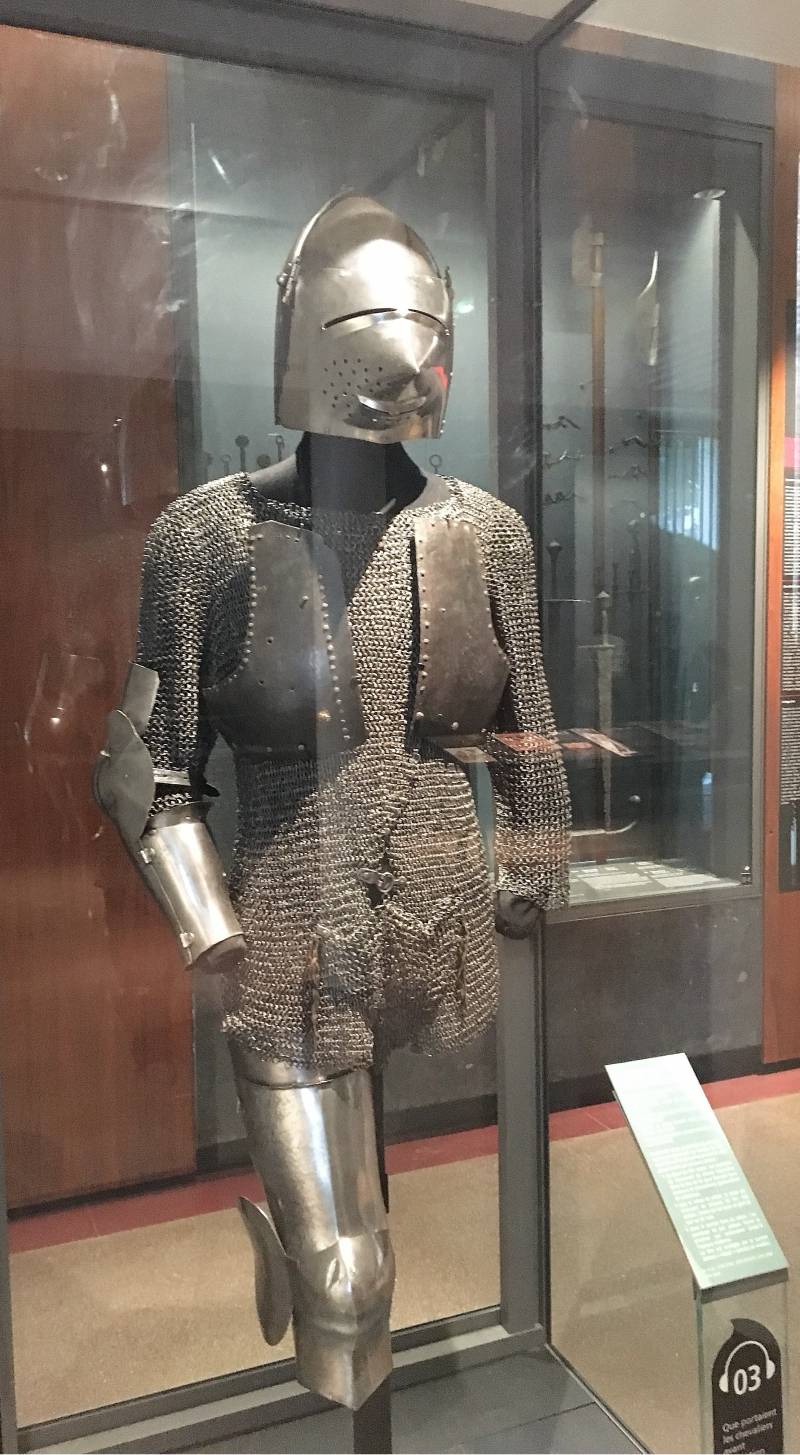
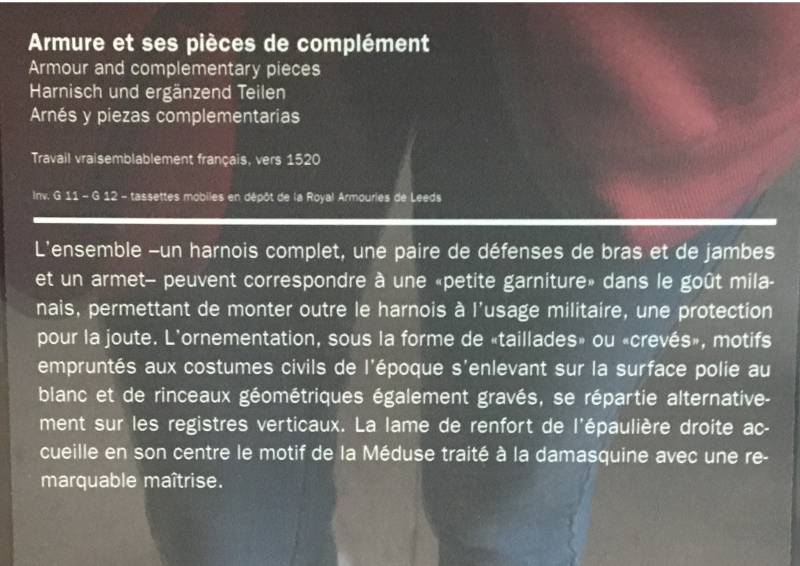
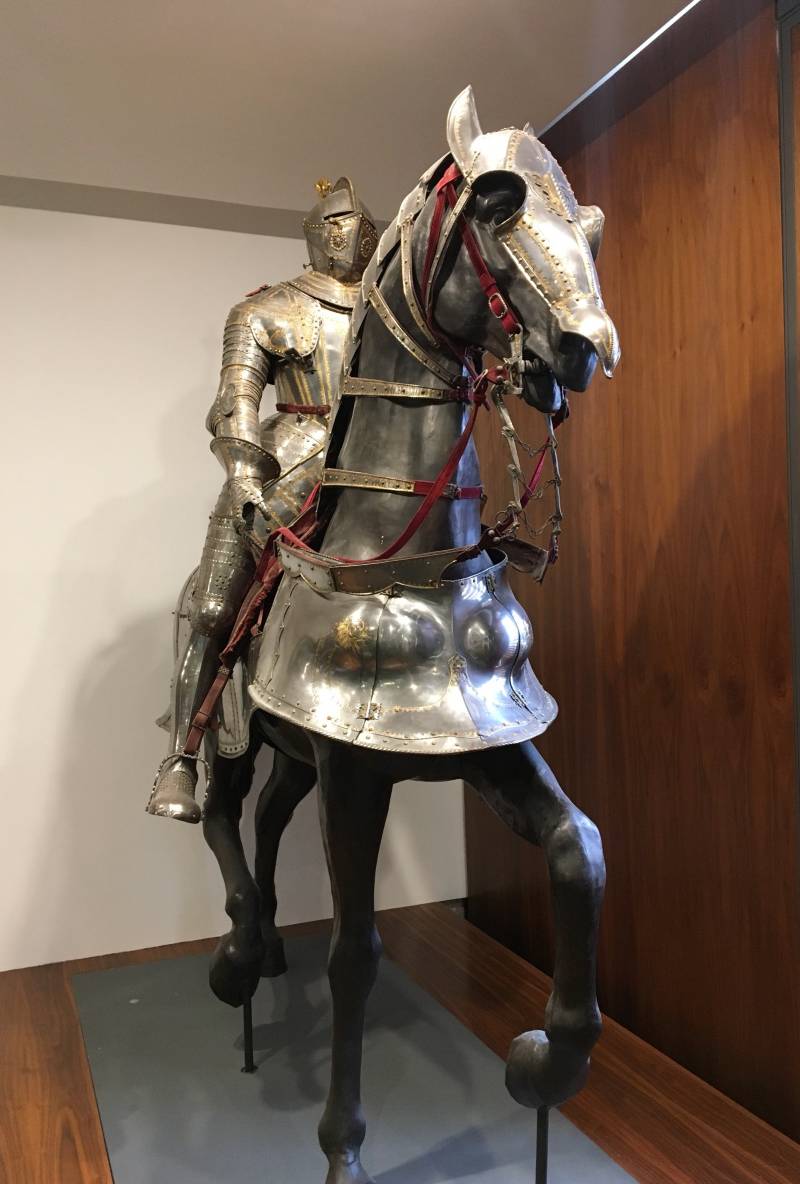
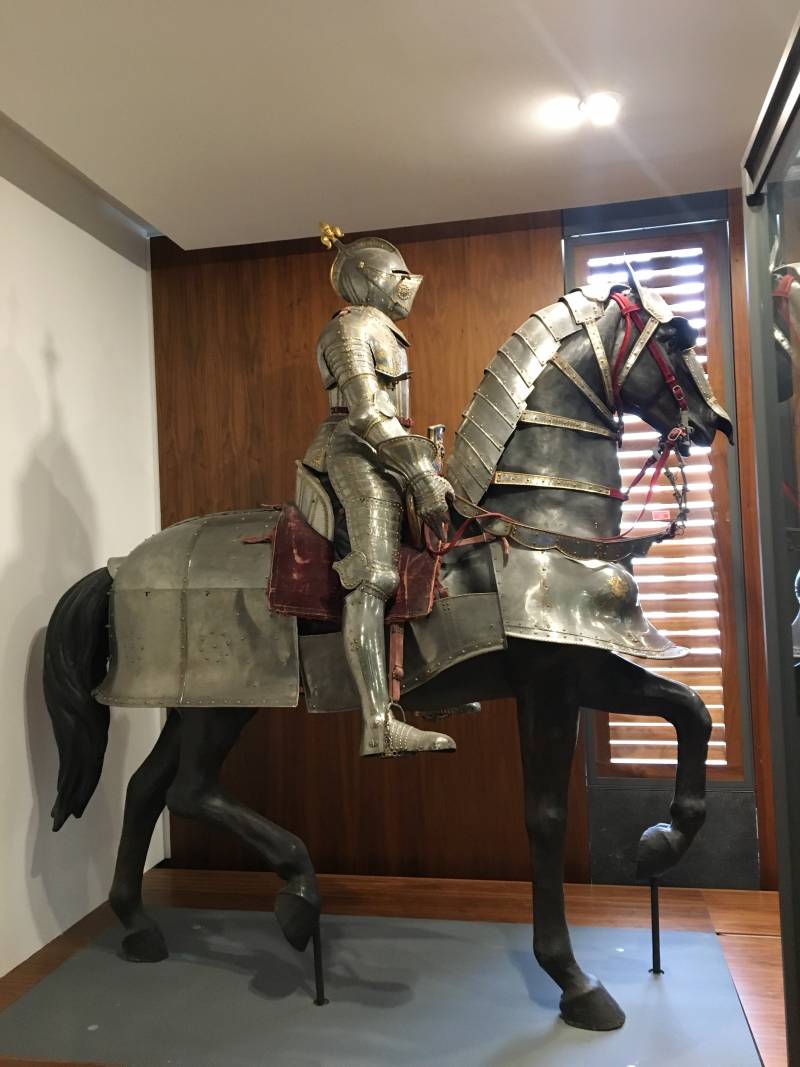
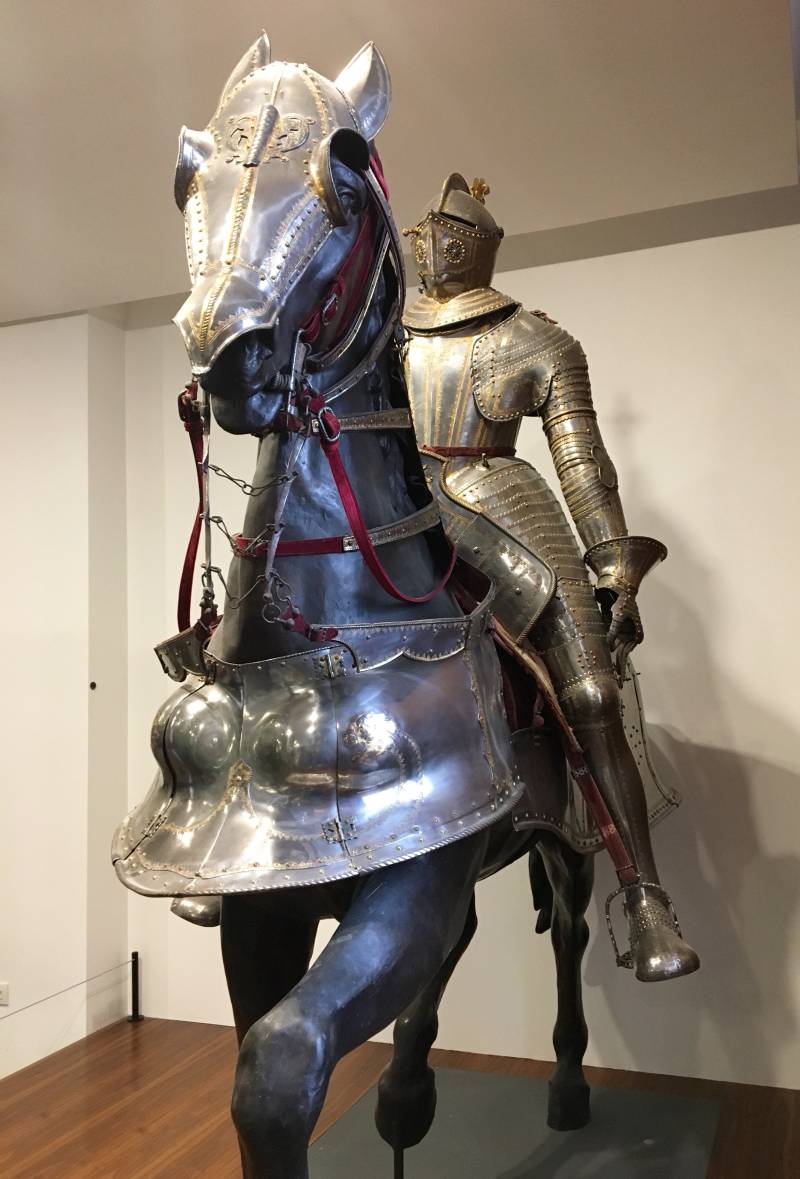
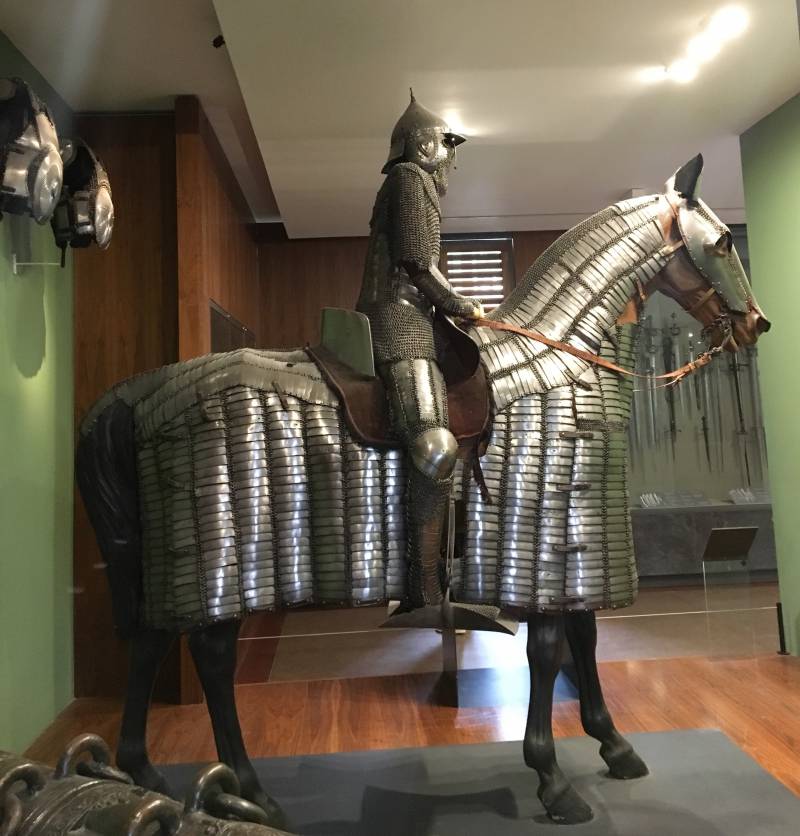
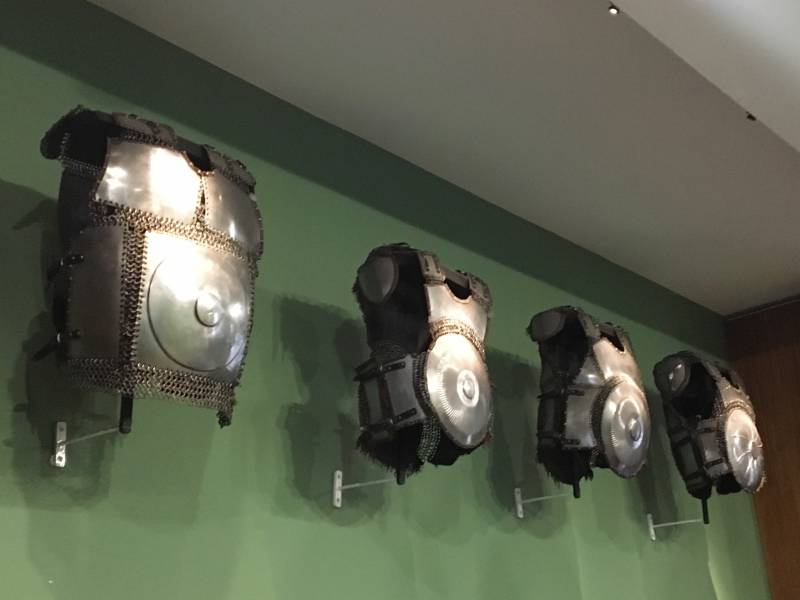
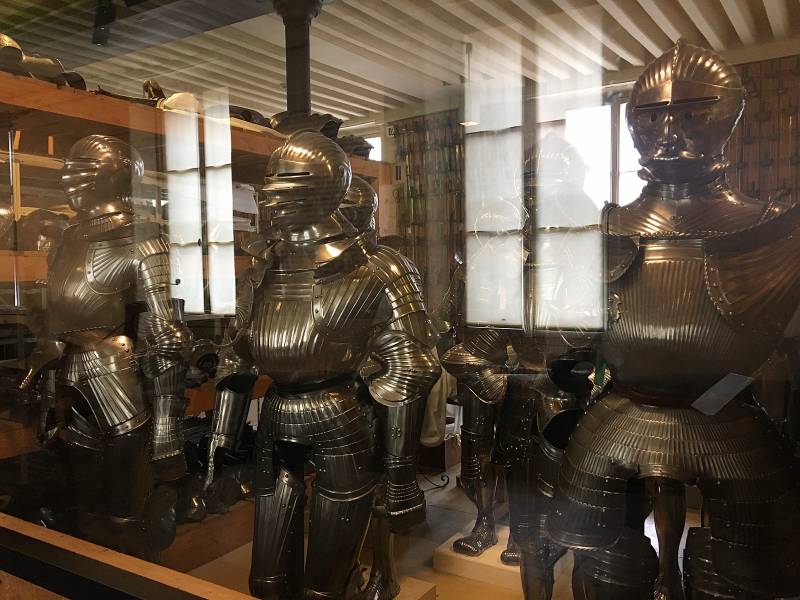
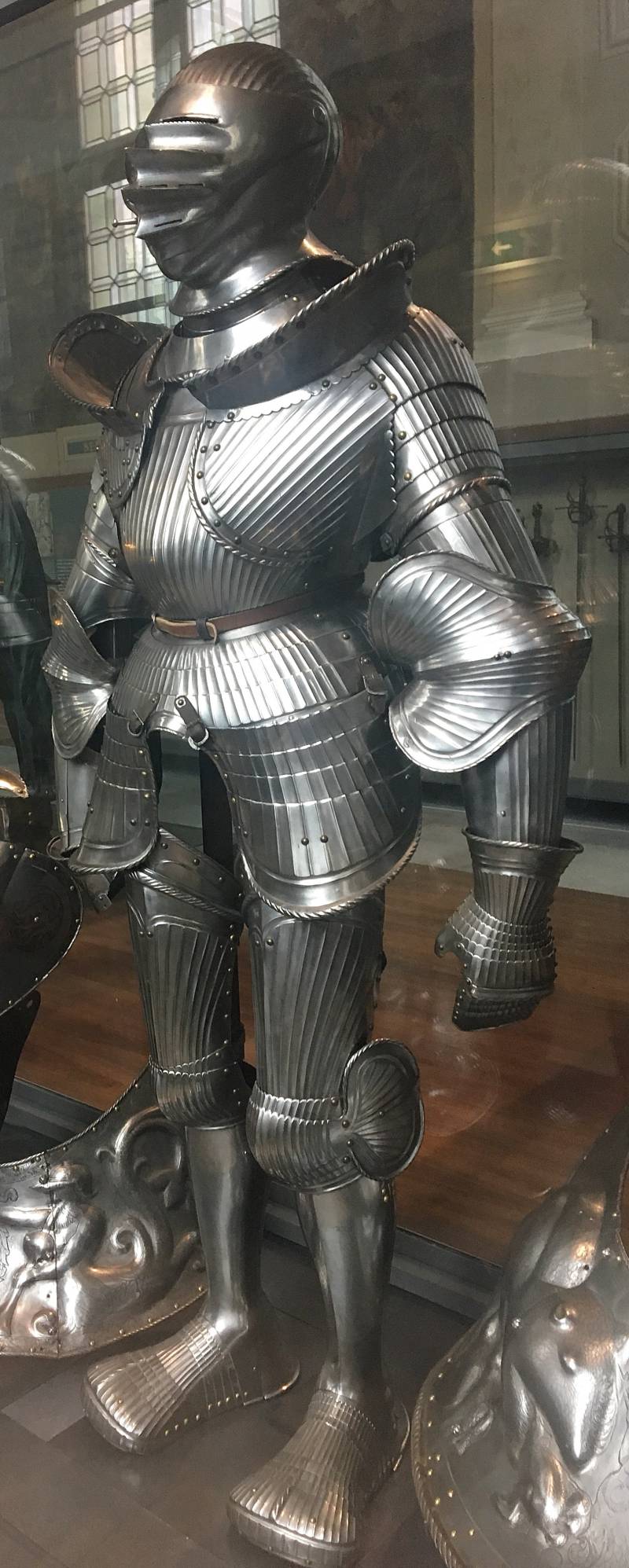
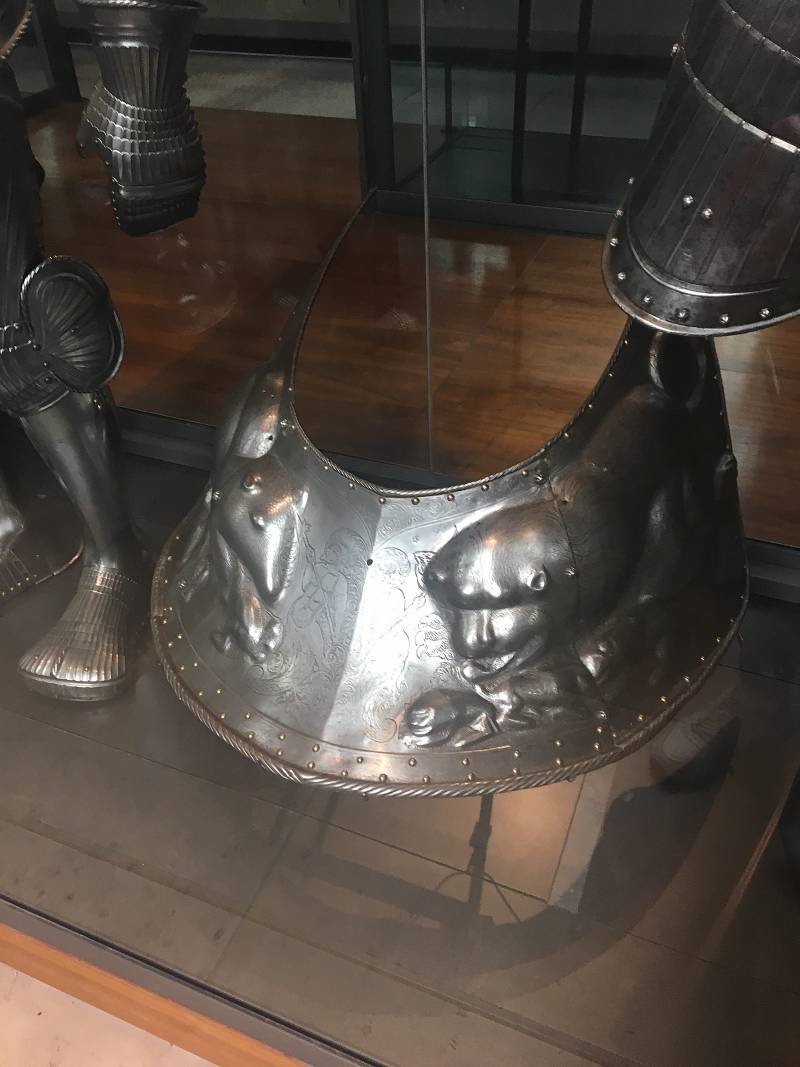
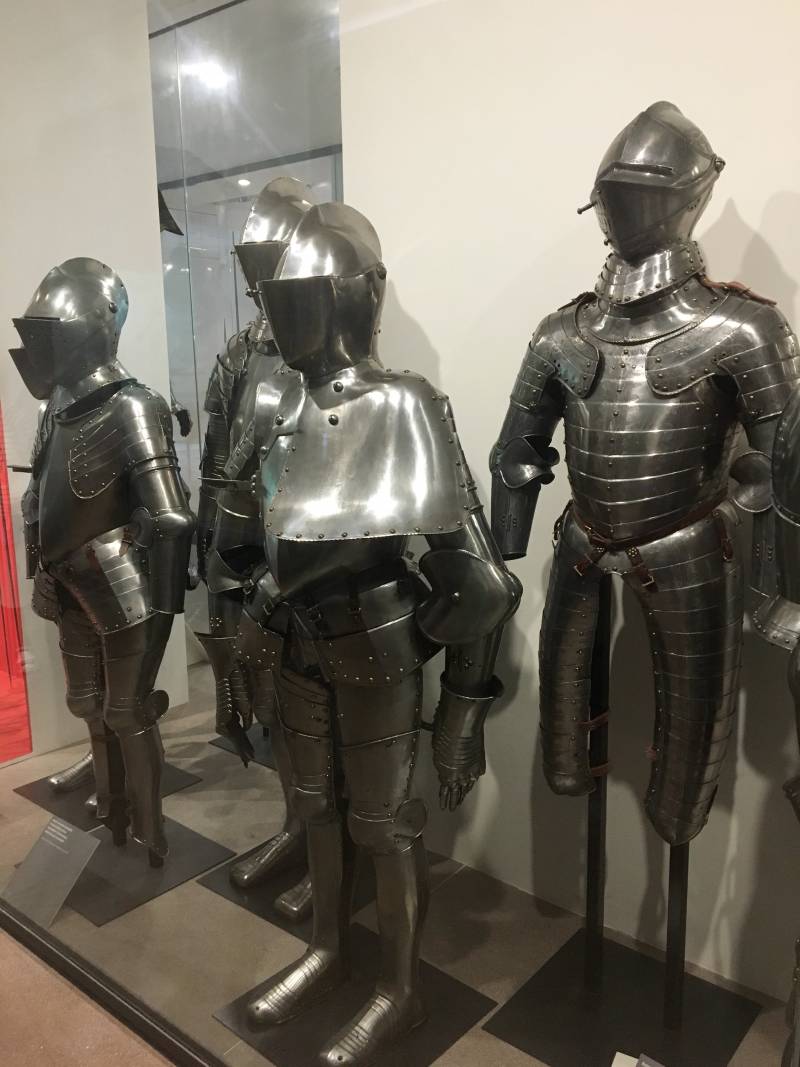
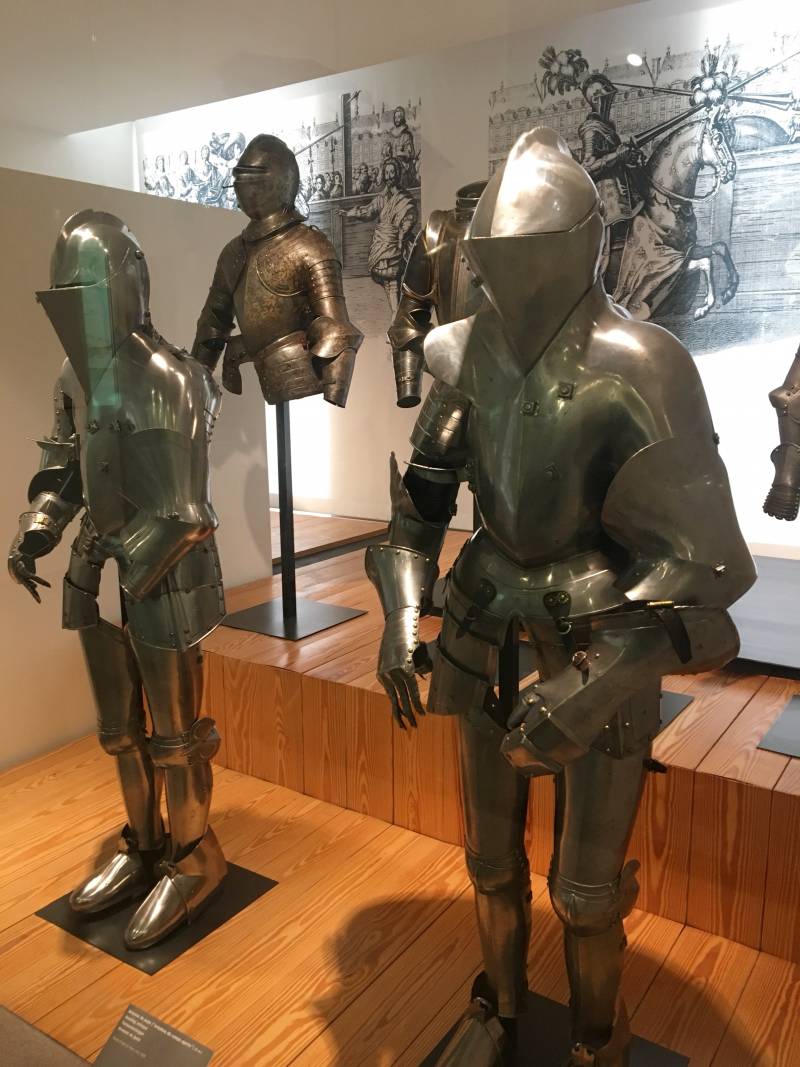
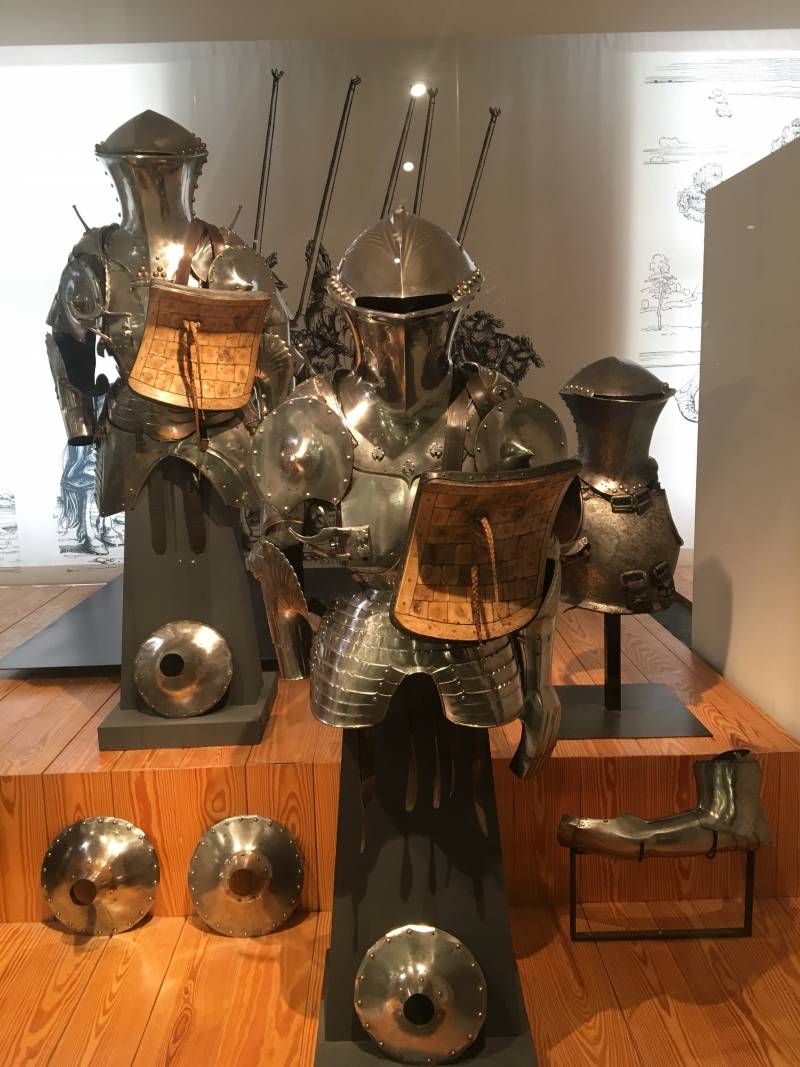
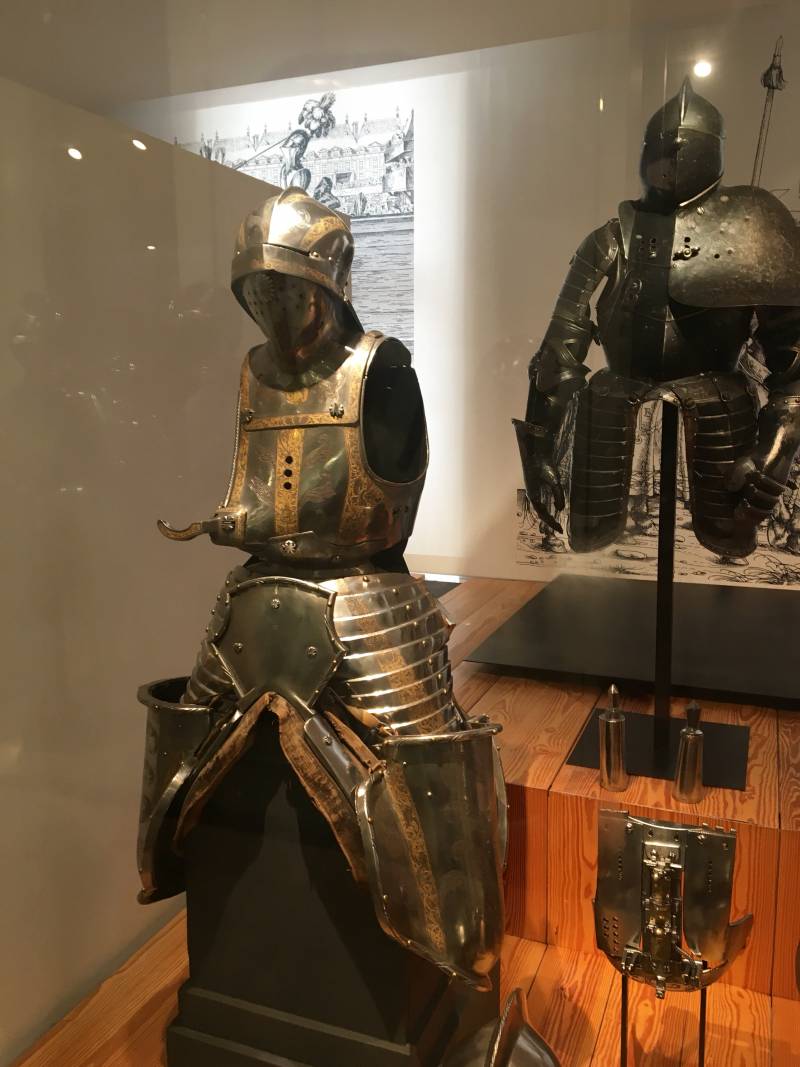
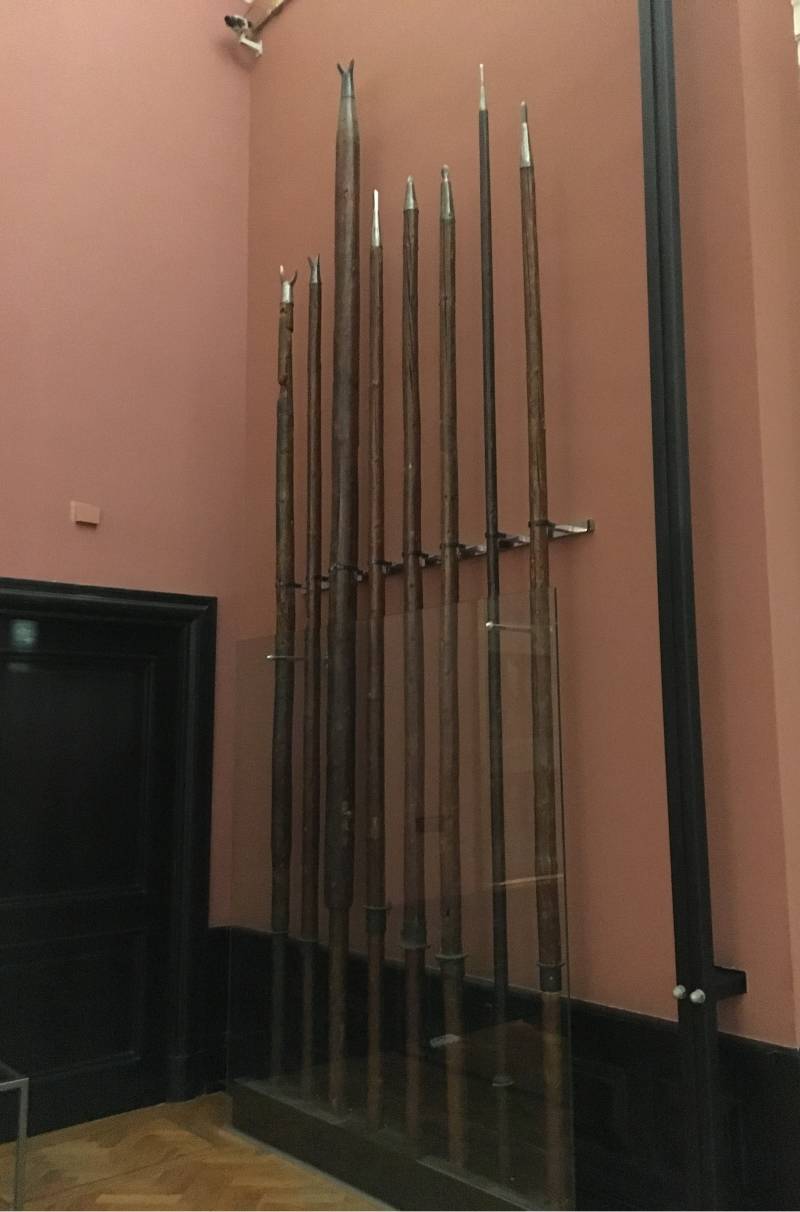
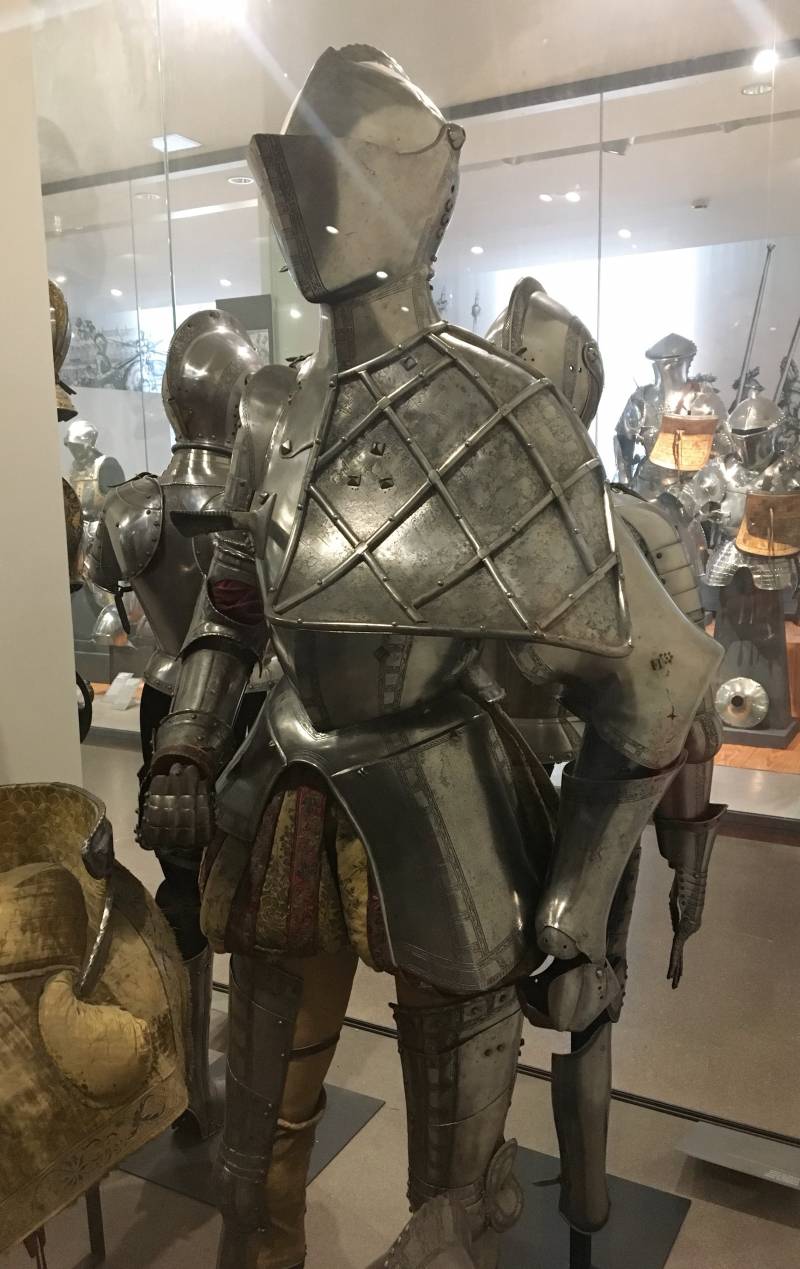
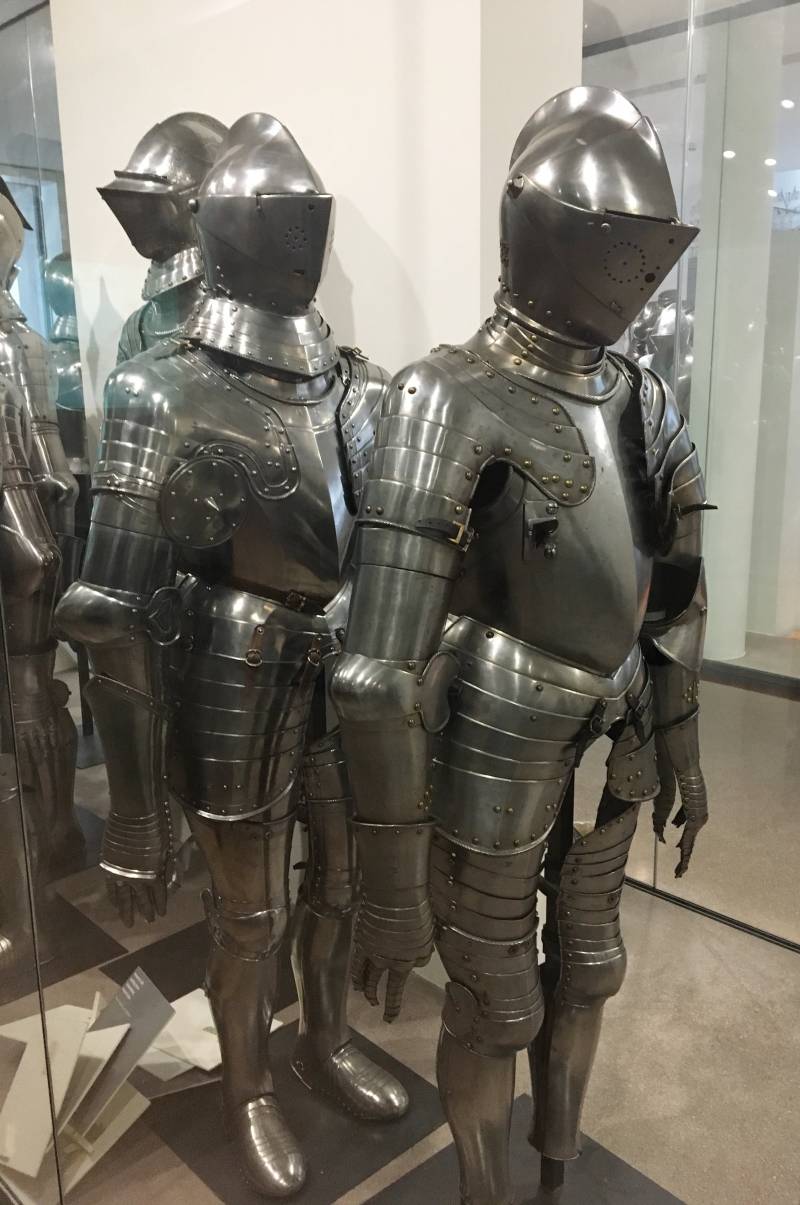
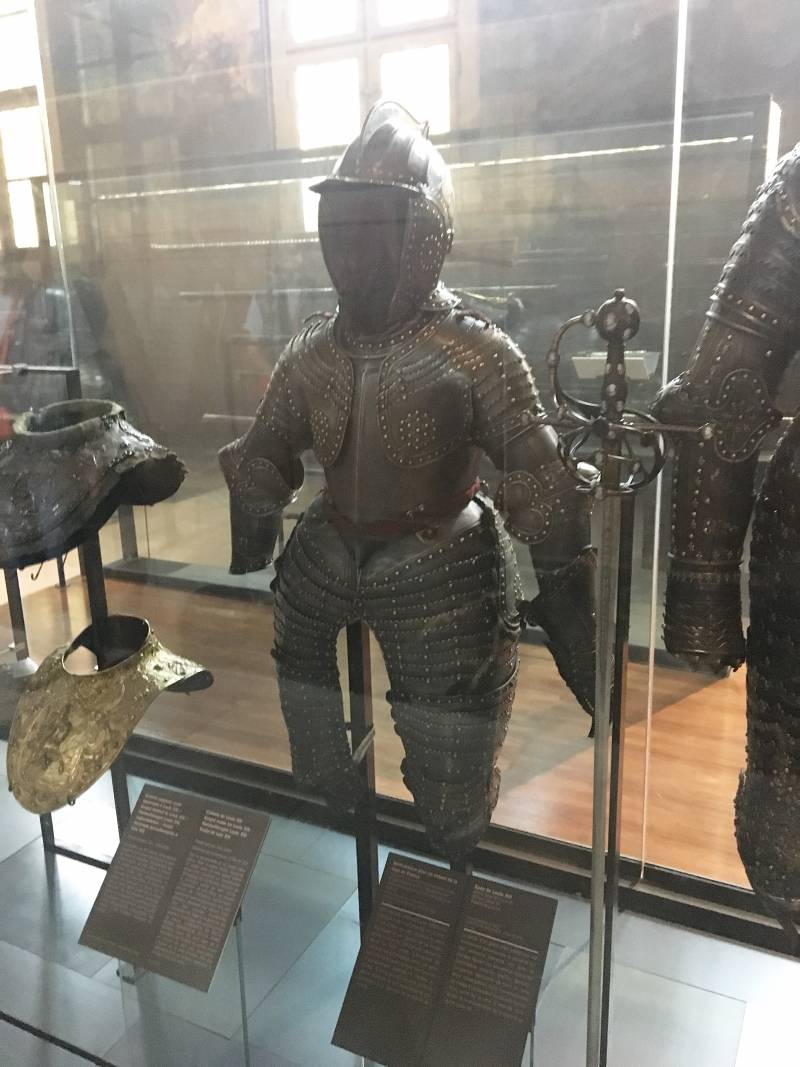
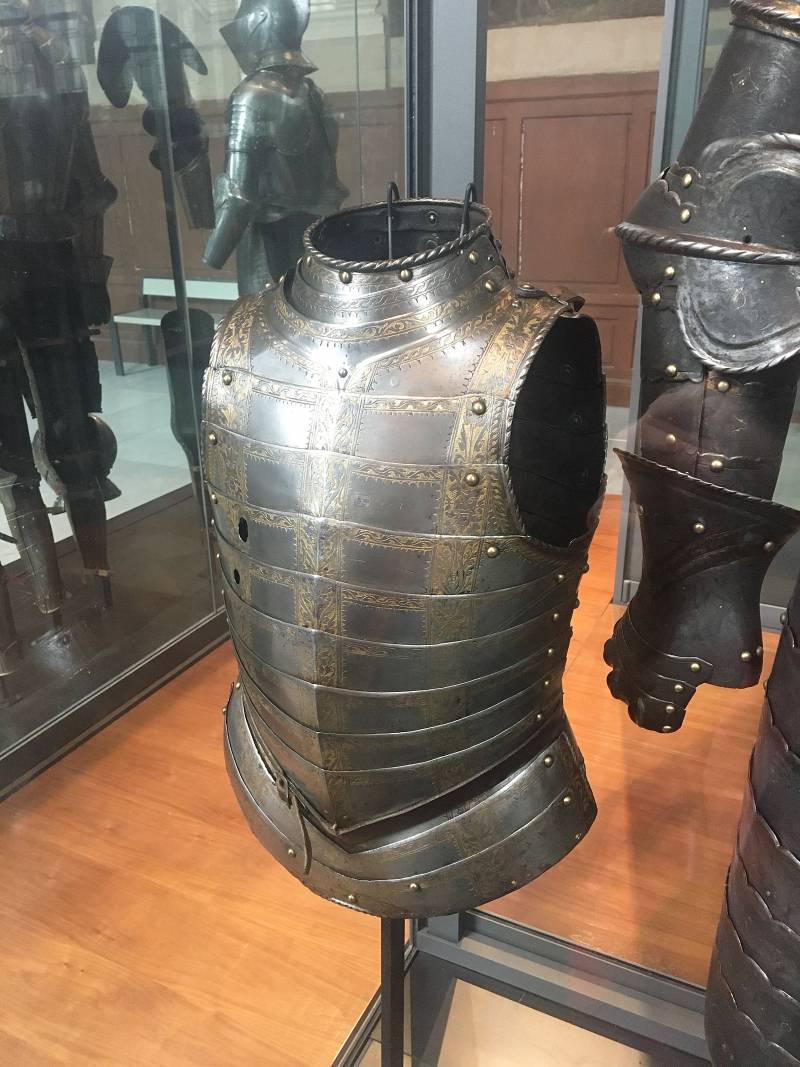
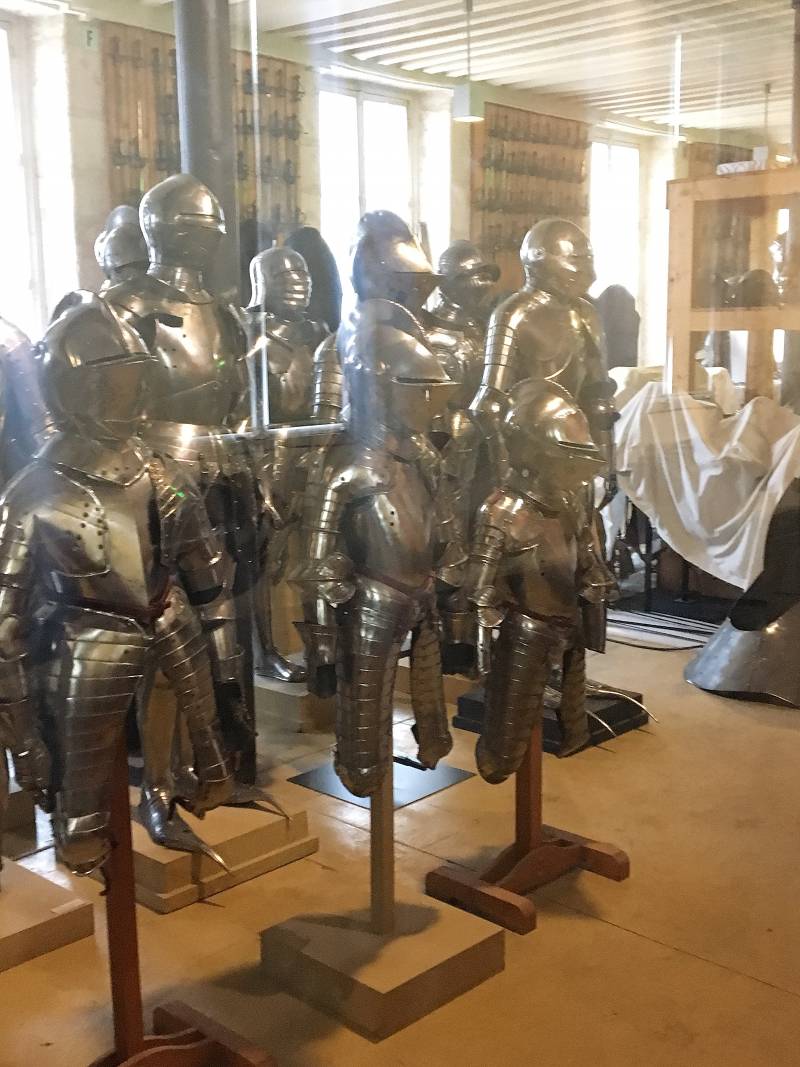
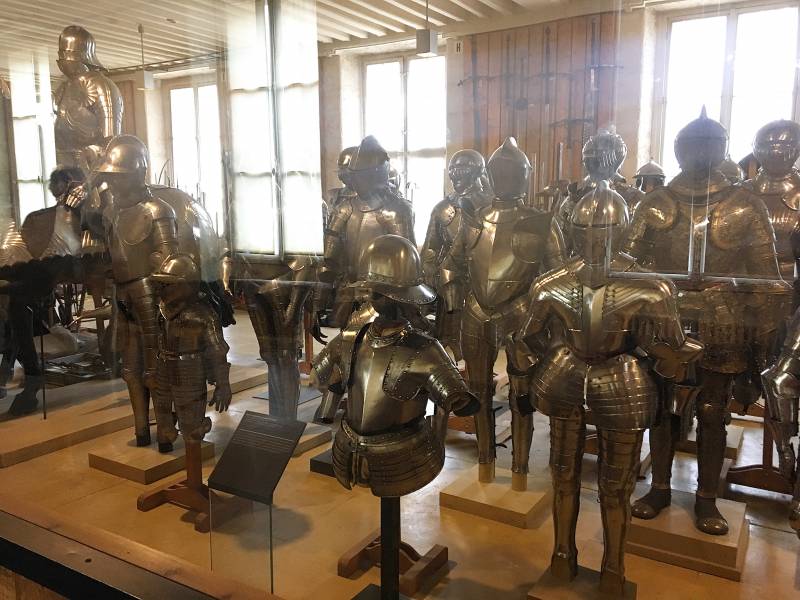
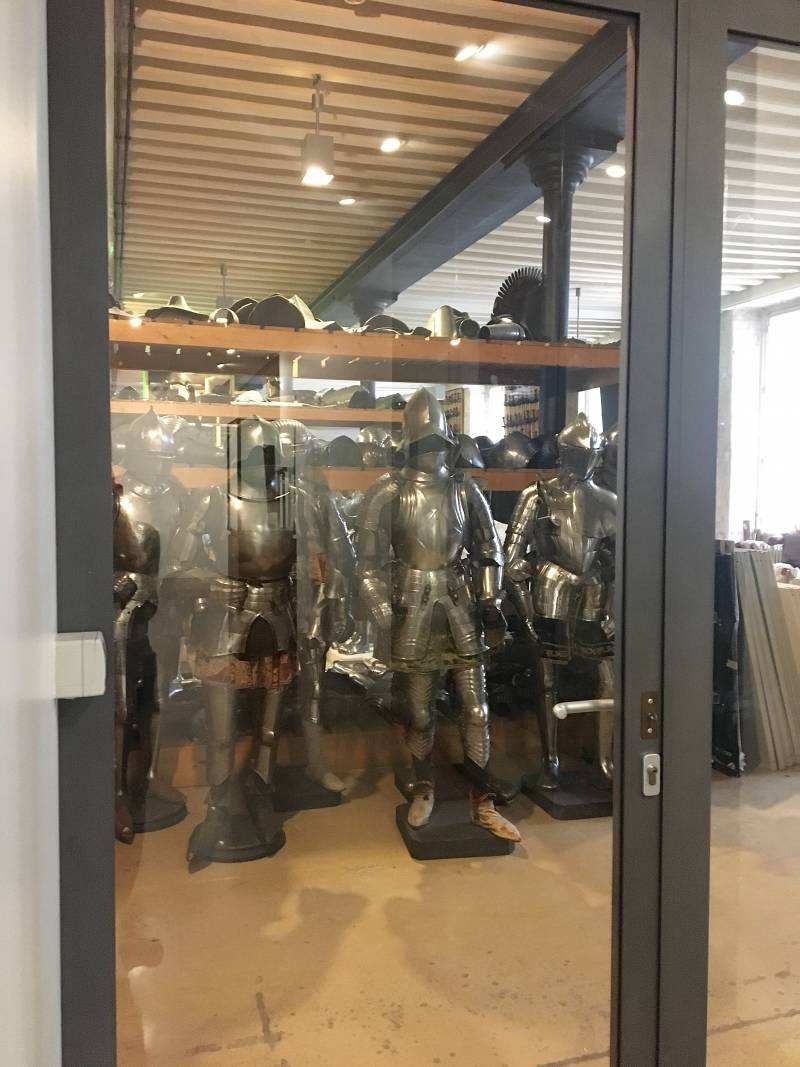
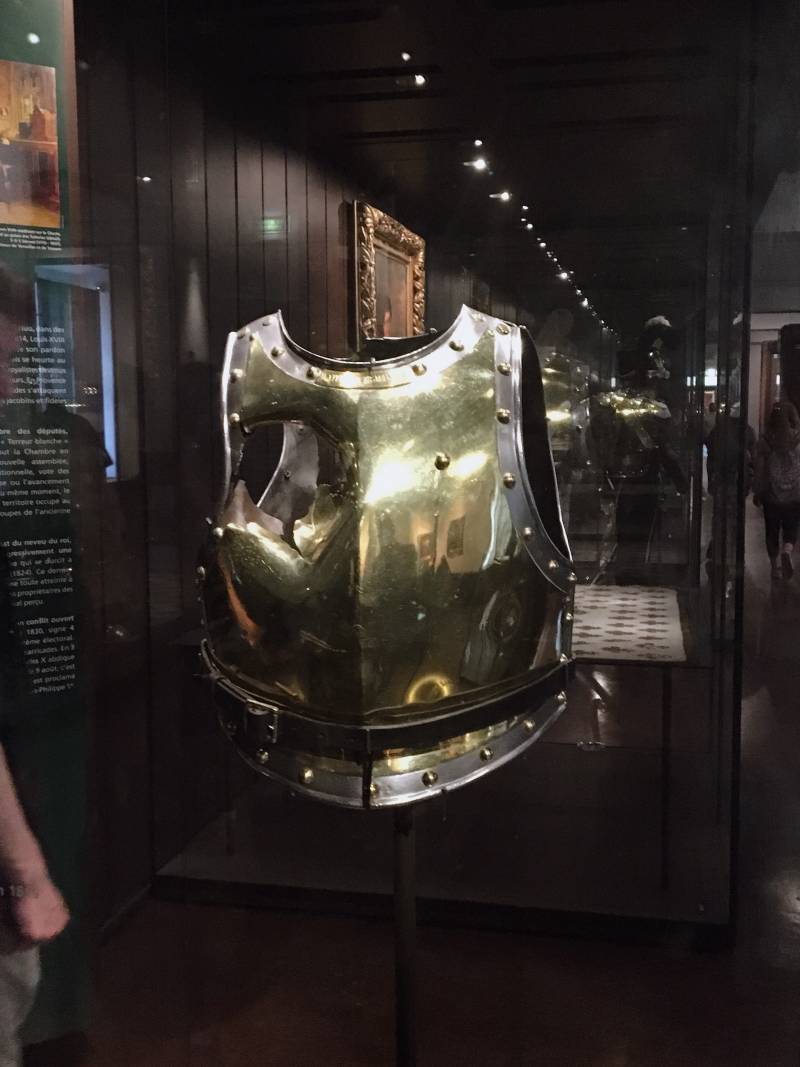
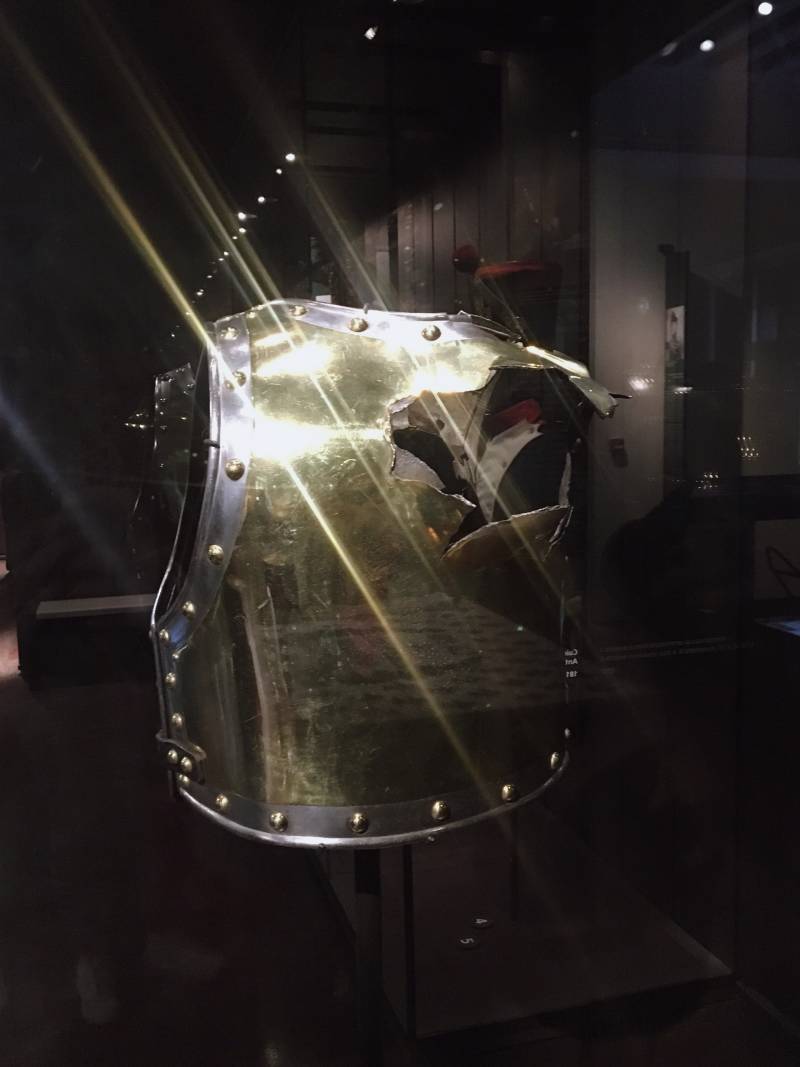
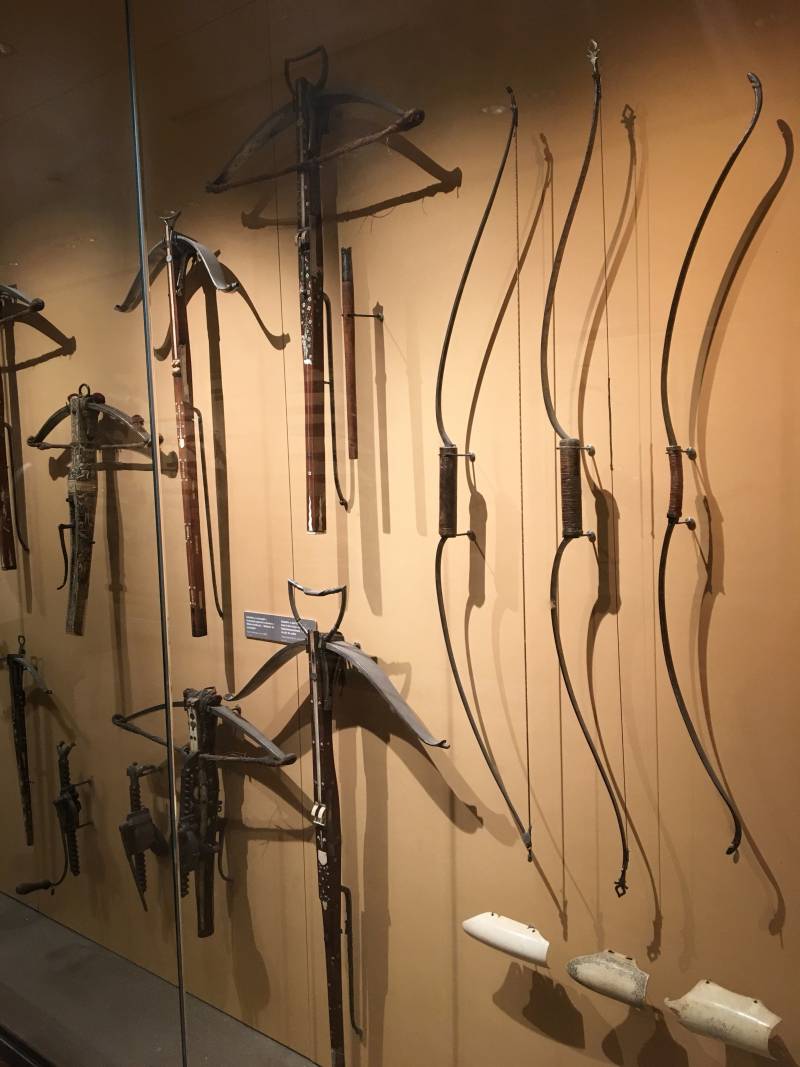
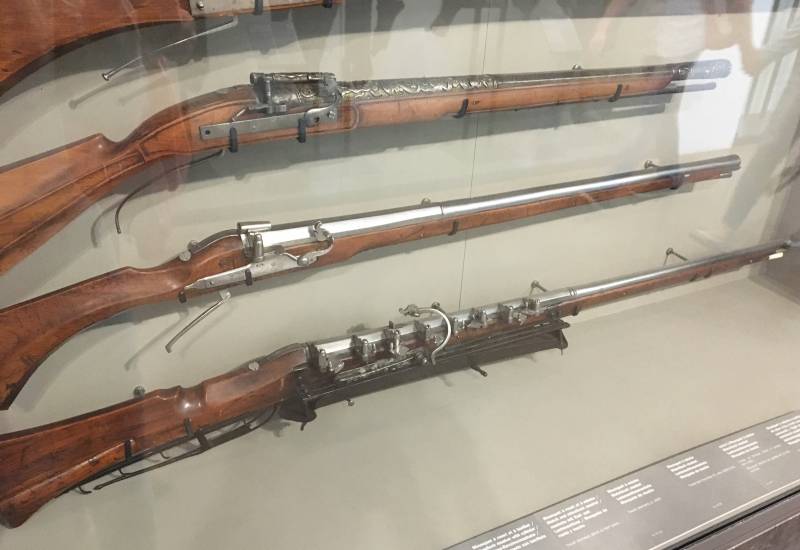
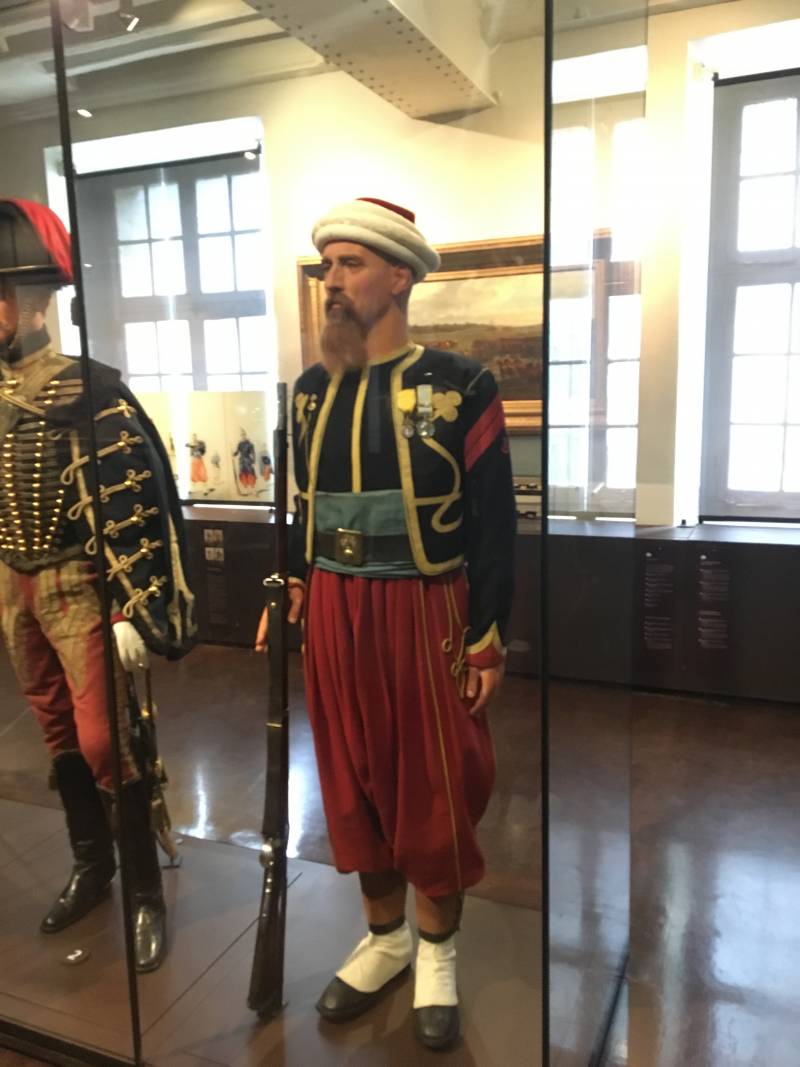
Information